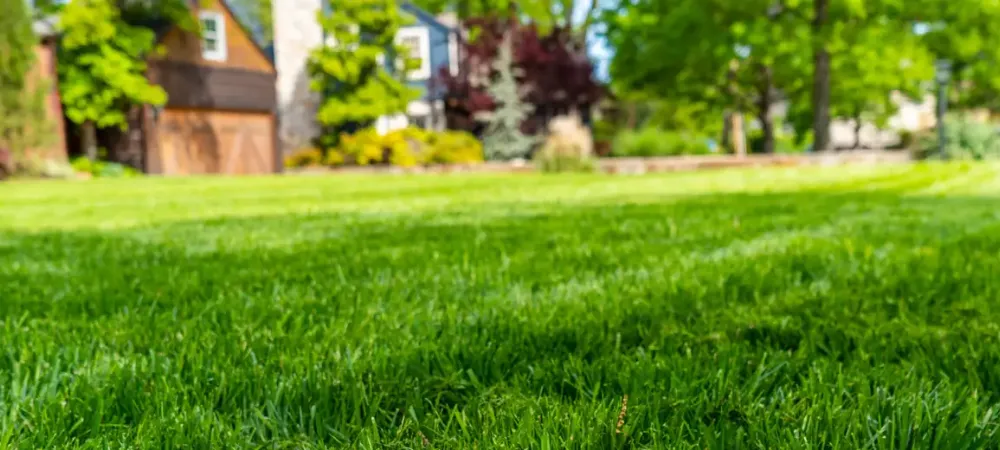How Liquid Aeration Can Transform Your Lawn

If you want a healthier, greener lawn, choosing the right aeration method can make all the difference. Liquid aeration is gaining traction as an effective solution, offering several benefits over traditional core aeration. In this blog, we’ll delve deeper into how liquid aeration works, its advantages, and why it might be the better choice for your lawn.
What is Liquid Aeration?
Liquid aeration involves applying a specially formulated liquid solution to your lawn. This solution contains compounds designed to break down soil compaction and improve soil structure. Unlike core aeration, which physically removes soil plugs to create holes, liquid aeration uses chemical reactions to achieve similar results.
How Liquid Aeration Works
Liquid aeration involves applying a specially formulated liquid solution to the lawn. This solution contains surfactants, soil conditioners, and other active ingredients designed to improve soil health and structure.
Key Components of Liquid Aeration Solutions
- Surfactants: These agents help the liquid penetrate the soil more effectively, allowing the solution to reach the root zone and interact with the soil particles.
- Soil Conditioners: These substances modify the soil's physical properties by breaking down compacted soil and improving its structure.
- Humic Acids: Found in some liquid aeration products, these organic compounds enhance soil fertility and promote beneficial microbial activity.
How Liquid Aeration Improves Your Lawn
Reduces Soil Compaction
Compaction occurs when soil particles are pressed together, reducing the space available for air, water, and roots. This can lead to poor lawn health, as roots struggle to grow and access essential nutrients. Liquid aeration addresses this issue by chemically breaking apart compacted soil layers, creating more room for root expansion.
Enhances Nutrient and Water Absorption
With reduced compaction, water and nutrients can more effectively reach the root zone. This leads to better fertilizer uptake and improved hydration. As a result, your lawn becomes more resilient to drought and stress, with enhanced overall growth and health.
Promotes Root Growth
A well-structured soil supports deeper and more extensive root systems. Liquid aeration helps roots to spread out and grow deeper, which strengthens the lawn and improves its ability to withstand adverse conditions, such as extreme temperatures or heavy foot traffic.
Dethatches the Soil
Thatch is a layer of organic material that can accumulate on the soil surface. While a thin layer of thatch can be beneficial, excessive thatch can impede water and nutrient absorption. Liquid aeration helps to break down this layer, allowing for better soil contact and healthier grass growth.
Benefits of Liquid Aeration Over Core Aeration
Less Disruption
Core aeration involves removing soil plugs from your lawn, which can temporarily disrupt the surface and leave visible holes. Liquid aeration, on the other hand, is a non-invasive method that improves soil conditions without affecting the lawn’s appearance or causing any mess.
Faster Results
Liquid aeration often produces visible improvements more quickly than core aeration. The enhanced soil structure and improved nutrient absorption can lead to noticeable changes in lawn health within a few weeks of application.
Easier and Less Messy
Aerator tools used for core aeration can be bulky and cumbersome. Liquid aeration requires no special equipment beyond a sprayer, making it easier to apply and less messy. This simplicity is ideal for homeowners looking for a straightforward solution to soil compaction issues.
Cost-Effective
Without the need for heavy machinery or soil removal, liquid aeration can be a more affordable option compared to core aeration. The reduced labor and equipment costs often translate to lower overall expenses, making it a cost-effective choice for many homeowners.
When to Use Liquid Aeration
Liquid aeration is most effective when applied during the active growing season, typically in the spring or fall. These times are ideal because your lawn is better able to take advantage of the improved soil conditions and enhanced root growth.
Optimal Timing for Application
- Spring: Applying liquid aeration in the spring helps your lawn recover from winter stress and prepares it for the growing season ahead. It can boost early growth and improve nutrient uptake.
- Fall: A fall application can help your lawn prepare for winter by improving root growth and enhancing soil structure before the colder months. It also sets the stage for a strong start in the spring.
Conclusion
Liquid aeration offers a modern, effective approach to improving lawn health. By addressing soil compaction, enhancing nutrient and water absorption, and promoting robust root growth, it provides significant advantages over traditional core aeration. With its non-invasive application, faster results, and cost-effectiveness, liquid aeration is a valuable tool for achieving a vibrant and healthy lawn.
If you’re considering an aeration service to boost your lawn’s health, liquid aeration could be the perfect solution. For more information and to schedule your liquid aeration treatment, contact Wetlands Irrigation and Turf today!
